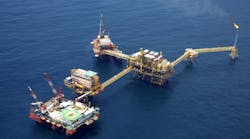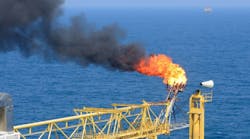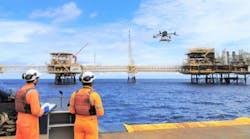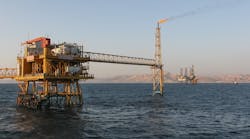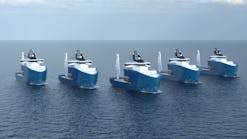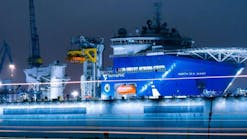EU methane regulations prompt emissions reduction technology advancements
By Ariana Hurtado, Editor and Director of Special Reports
The EU reached a provisional agreement in November 2023 on a new regulation on methane emissions reduction in the energy industry. The regulation was first proposed in December 2021, following the adoption of the EU Methane Strategy in 2020.
The currect regulation includes but is not limited to the following measures, which have been put in place to minimize the release of methane in fossil fuel operations within the EU:
- Mandatory measurement, reporting and verification requirements for emissions at the source level, including for non-operated assets;
- Mandatory leak detection and repair of equipment for all oil and gas facilities;
- Ban of routine venting and flaring in the oil and gas sectors and the restriction of non-routine venting and flaring to unavoidable circumstances;
- Obligation for oil, gas and coal sectors to complete inventory, emissions monitoring and mitigation plans for closed, inactive, plugged and abandoned assets; and
- Limitation of venting from thermal coal mines starting in 2027, with tighter restrictions from 2031.
"New IEA [International Energy Agency] analysis shows that fully implementing existing pledges on methane would deliver the majority, but not all, of the emissions cuts needed this decade to align with 1.5 C," the IEA reported earlier this week. "Methane emissions from the energy sector remained near a record high in 2023 – but substantial policies and regulations announced in recent months, as well as fresh pledges stemming from the COP28 climate summit in Dubai, have the potential to put them into decline soon."
Efforts to reduce methane emissions are expected to ramp up in 2024 and beyond.
"Nearly 200 governments agreed in Dubai to 'substantially' reduce methane emissions by 2030, while significant regulatory initiatives were announced by Canada, the European Union and the United States around the time of the summit. New companies have also committed to action through the launch of the Oil and Gas Decarbonisation Charter, and more countries are joining the Global Methane Pledge – including, most recently, Azerbaijan, which will host COP29," the report stated. "If all methane pledges made by countries and companies to date are implemented in full and on time, it would be sufficient to cut methane emissions from fossil fuels by 50% by 2030, the IEA’s new analysis finds. However, most pledges are not yet backed up by plans for implementation."
Emissions monitoring technology
Regulations are driving an ongoing need in the energy industry for technology advancements and creative R&D to meet emissions reduction targets.
Sentinel Subsea, a Scotland-based company that focuses on passive monitoring of subsea infrastructure and equipment, has developed a technology that monitors emissions on offshore wells. These systems have already been deployed to support operations across the globe for major and independent operators. They have been deployed onto a range of subsea infrastructure, from wellheads to christmas trees.
For example, in March 2023 Sentinel Subsea deployed WellSentinel wellhead systems in the Gulf of Mexico and offshore Brazil via a collaboration with Baker Hughes. Then, in January of this year, Sentinel installed a WellSentinel Clam system to monitor a subsea christmas tree for an unnamed major operator. The operation, again performed with Baker Hughes, was on a producing field in a water depth of more than 400 m (1,300 ft).
In this Q&A with Offshore, which took place in late February, Sentinel Subsea Chairman Ray Riddoch OBE discussed the company's emissions monitoring system as well as the affects of the EU methane regulations on the industry.
Offshore: What are your thoughts on the soon-to-be-announced EU methane regulations, and what kind of impact will these have on the offshore oil and gas industry?
Riddoch: Since 2020, the EU has been working on a proposal for regulations to measure, report and verify methane emissions in the energy sector. By imposing monitoring and reporting obligations on operators, the regulations are aimed at improving environmental performance and reducing methane emissions to meet the EU’s net-zero goals.
In December 2023, these regulations were agreed on by the EU Council and the Parliament and will have a deep and long-lasting impact on the whole energy sector, especially the offshore industry. The rigor of the regulations being implemented will likely focus the offshore industry in a similar manner as was seen in the early '90s when the industry focused fully on improving safety offshore. Generally, there is a recognition of need for hydrocarbons in the energy mix until we can transition away; however, the industry will have to deal with increasing environmental legislation driven by societal pressure during that period.
Interestingly, these regulations are not only going to affect operators within the EU. The new methane regulations target emissions that are generated outside the EU and exported to member states. Aimed at creating better understanding of global methane sources, companies outside the EU will need supply information on equivalent measures related to monitoring, measurement, reporting and mitigation. The EU hopes that this will create better transparency of supply and will increase the possibility of wider uptake of methane mitigation across the globe. Indeed, these regulations signal the start of increasing pressure from regulators globally for operators to showcase how the industry is effectively tackling the issue of fugitive emissions created from producing oil and gas.
The issue is applying current measurement and monitoring technologies to subsea facilities, which can present several unique challenges. Unlike onshore and topside facilities, physically getting access to subsea sites to perform the required monitoring and measurements comes at increased difficulty, often involving the mobilization of vessel-based inspection via ROV. Couple this with the added difficulty of installing devices into existing subsea infrastructure, often requiring power, data communication or intervention. There will not be a one-size-fits-all solution; however, small footprint technologies with low-energy requirements are required to meet these stringent requirements in a technically feasible and cost-effective manner.
Offshore: Can you tell me a bit about Sentinel's emissions monitoring system? When was this released, and what are its offshore applications?
Riddoch: This is not a new technology. Sentinel has already developed and deployed offshore a suite of passive monitoring technologies, called WellSentinel, that can be applied to support operators de-risk these new regulations.
The systems continuously detect and alert for unwanted emissions and work by collecting and chemically detecting specific materials in the subsea environment. The systems are tuned (inserting the appropriate trigger) to respond only to the fluid of interest and nothing else they may encounter subsea. Once chemically detected, an individually coded alert beacon is released to the ocean surface and communicates via satellite to alert the asset owner. With the inclusion of Sentinel’s patented gas/fluid diverter, leak rates can be established, rate changes detected and alerted.
Offshore: How is Sentinel's emissions monitoring technology different from what's already offered on the market?
Riddoch: Current methods are unable to provide a real-time reliable alert to an operator or would be exceedingly costly to implement routinely, far above a risk level that is deemed ‘as low as reasonable practicable.' These are simple-to-deploy technologies with a low-cost over life of field. The non-invasive and passive nature of the system sets it apart from what is currently available on the market.
03.15.2024



